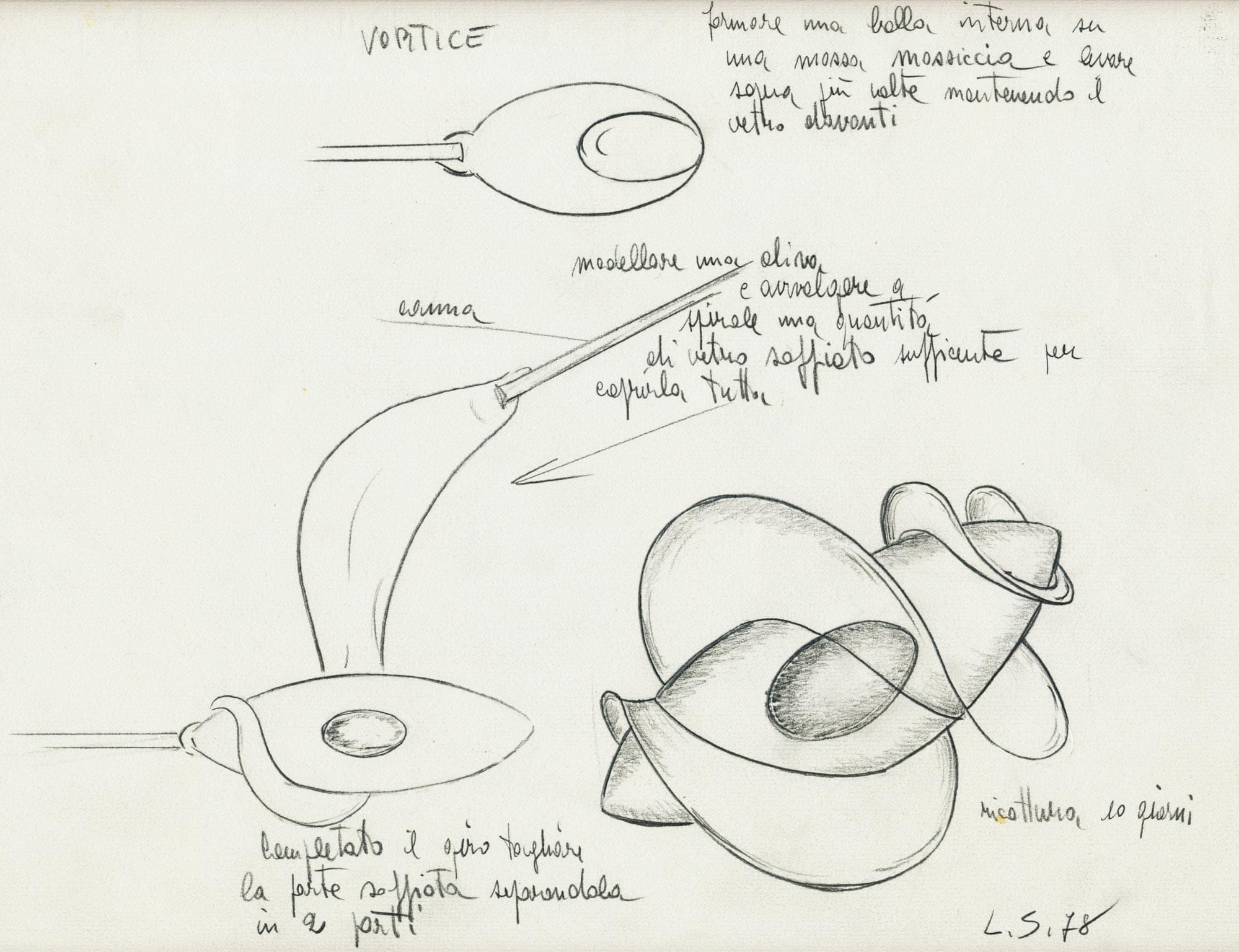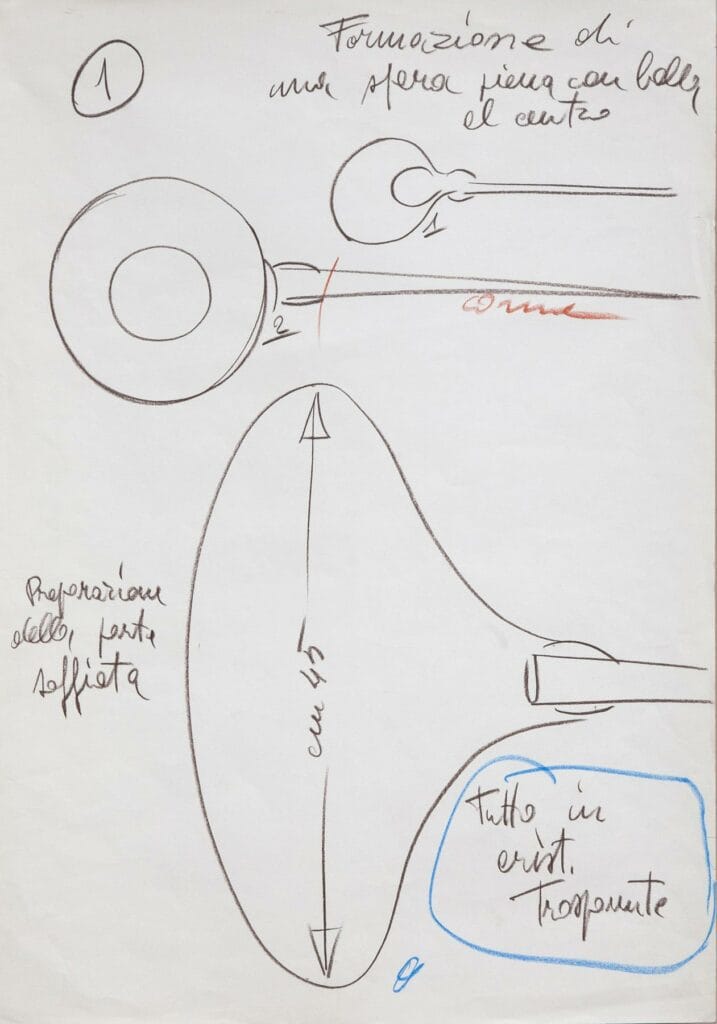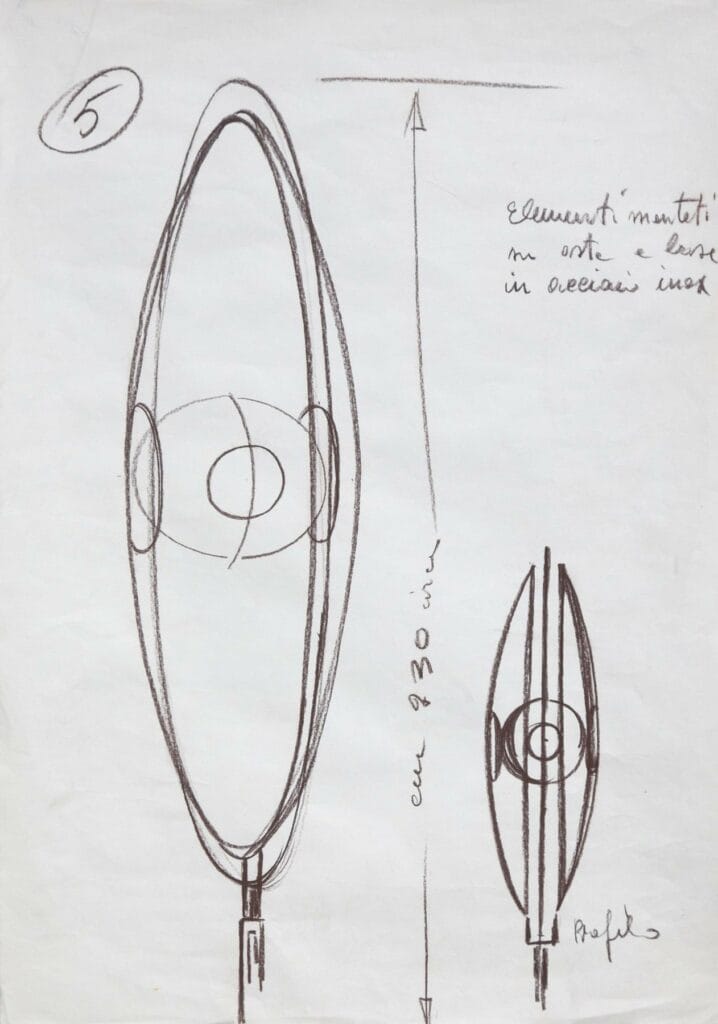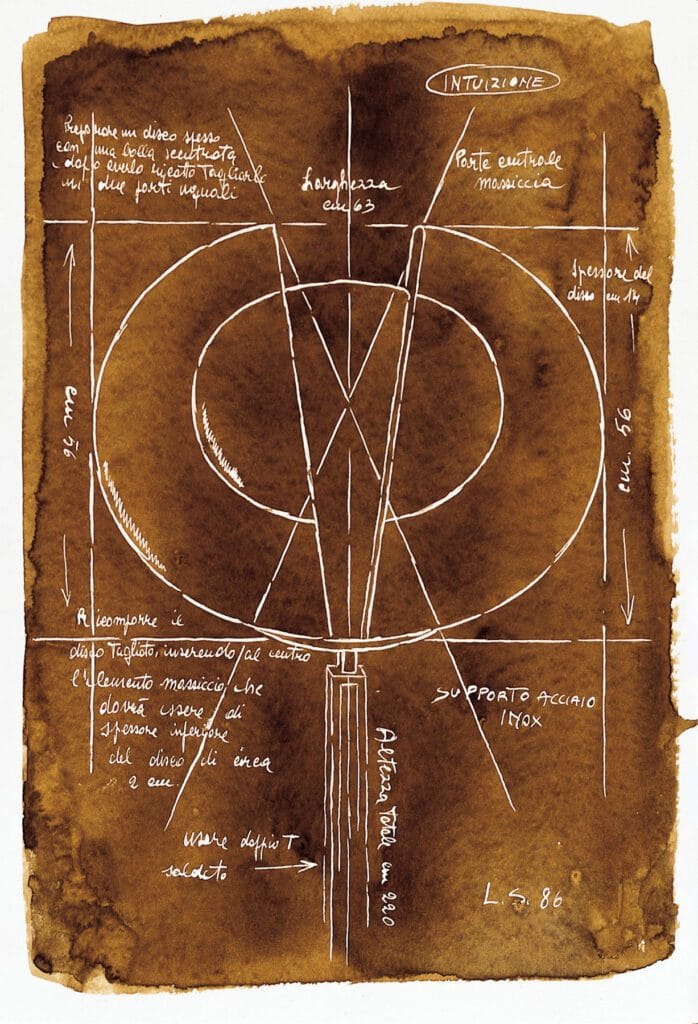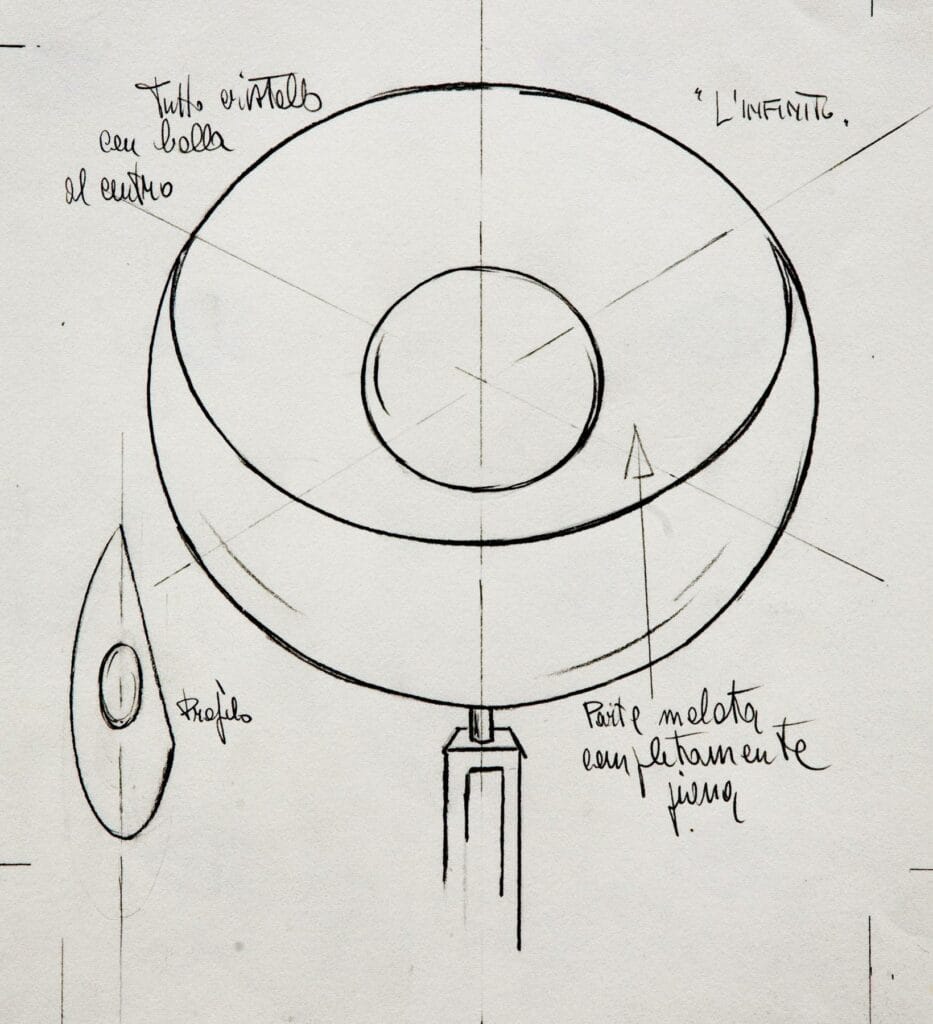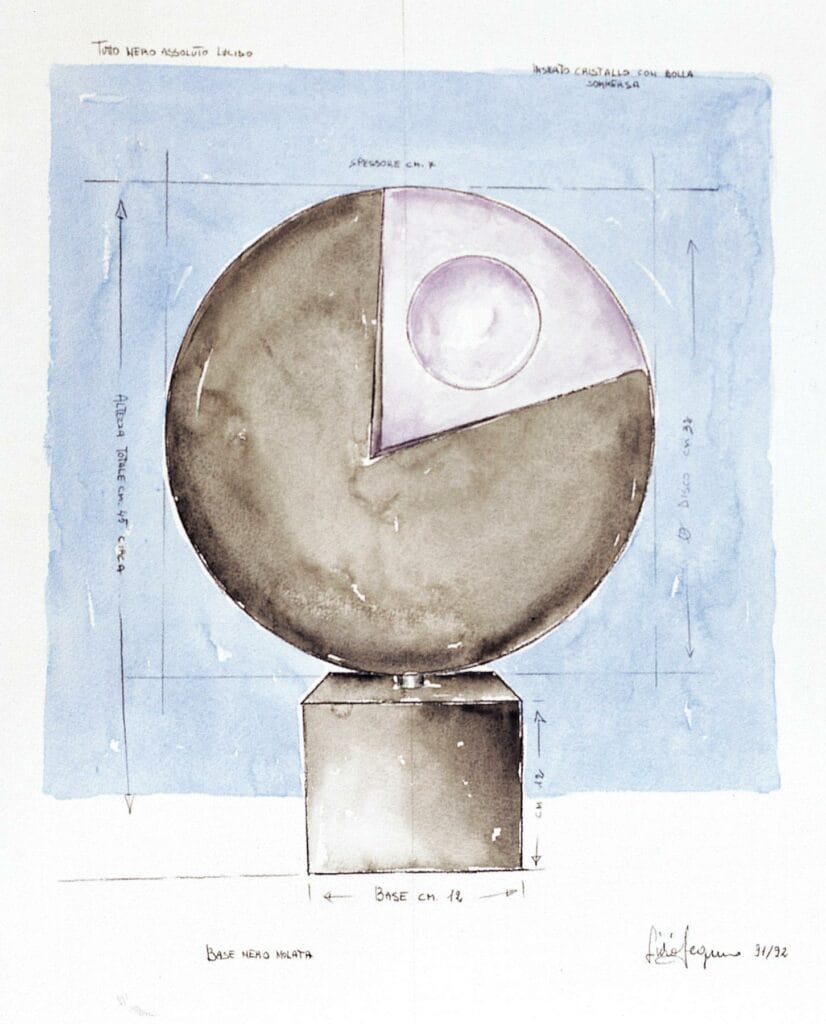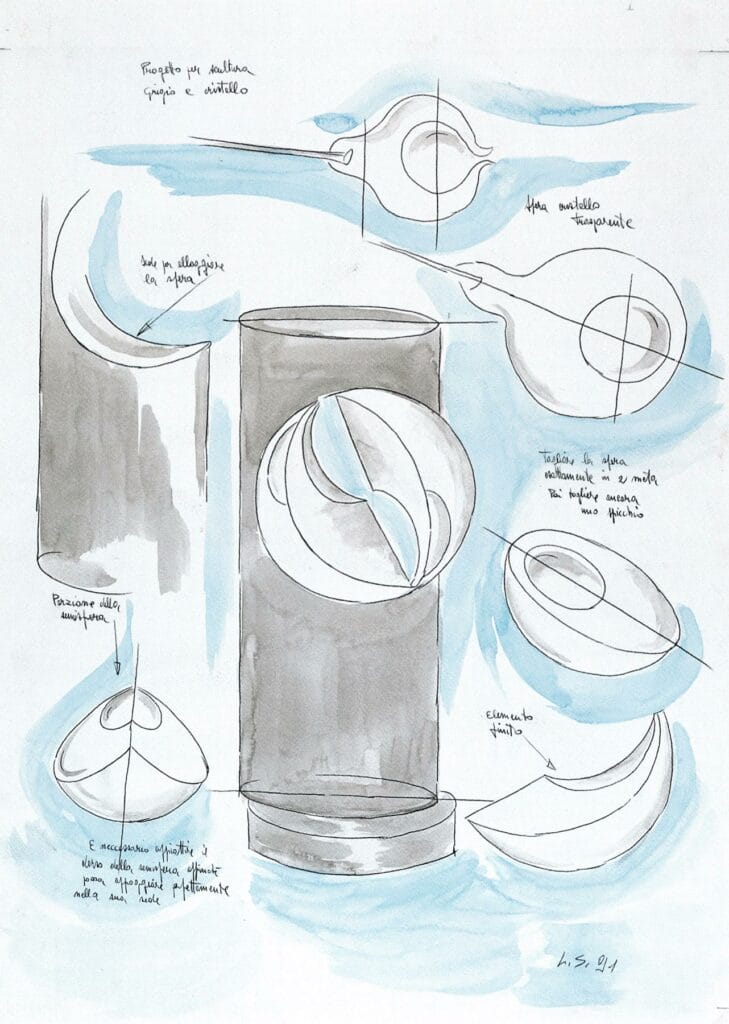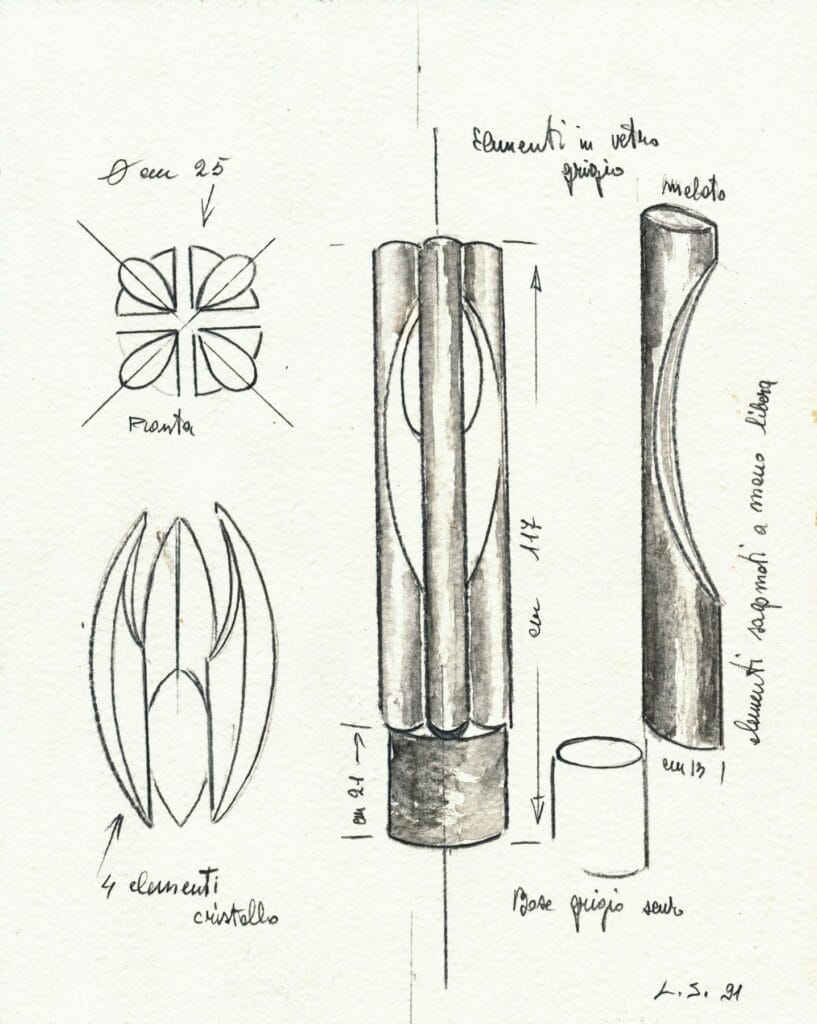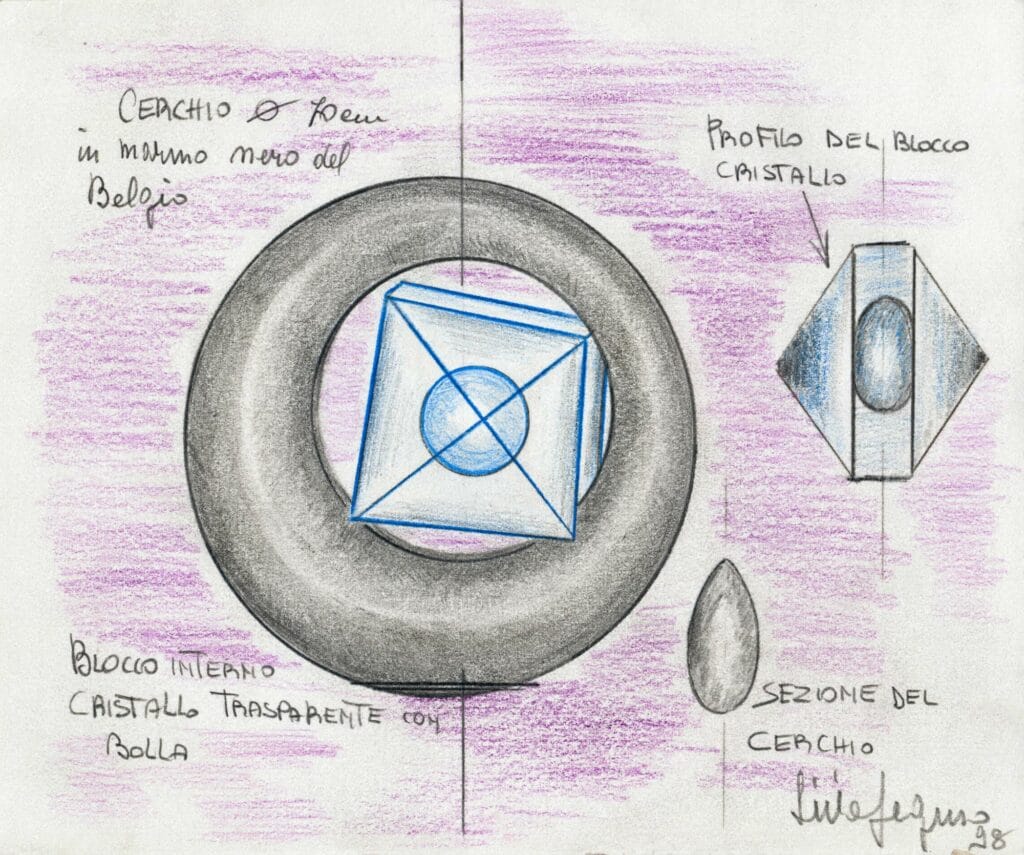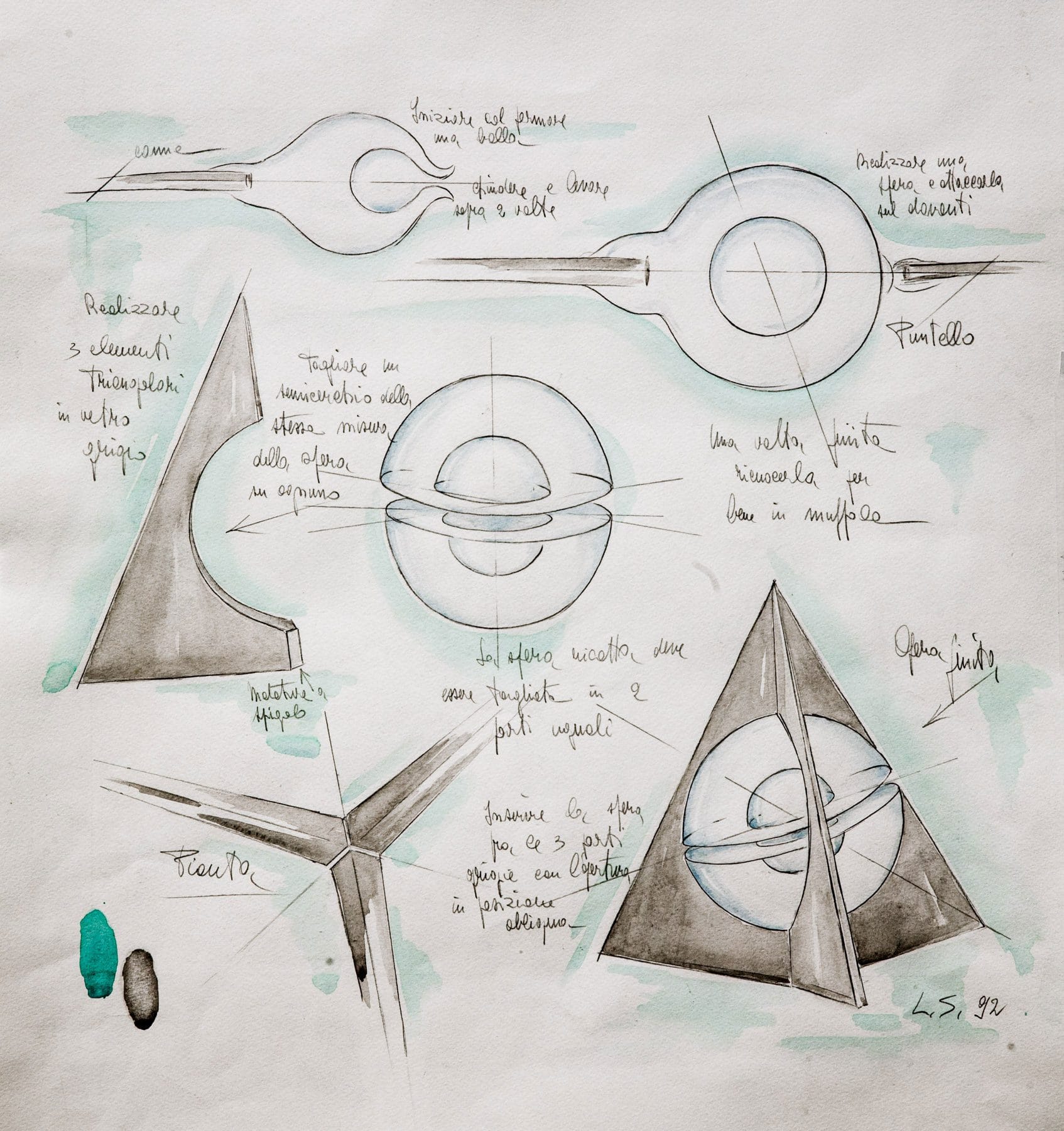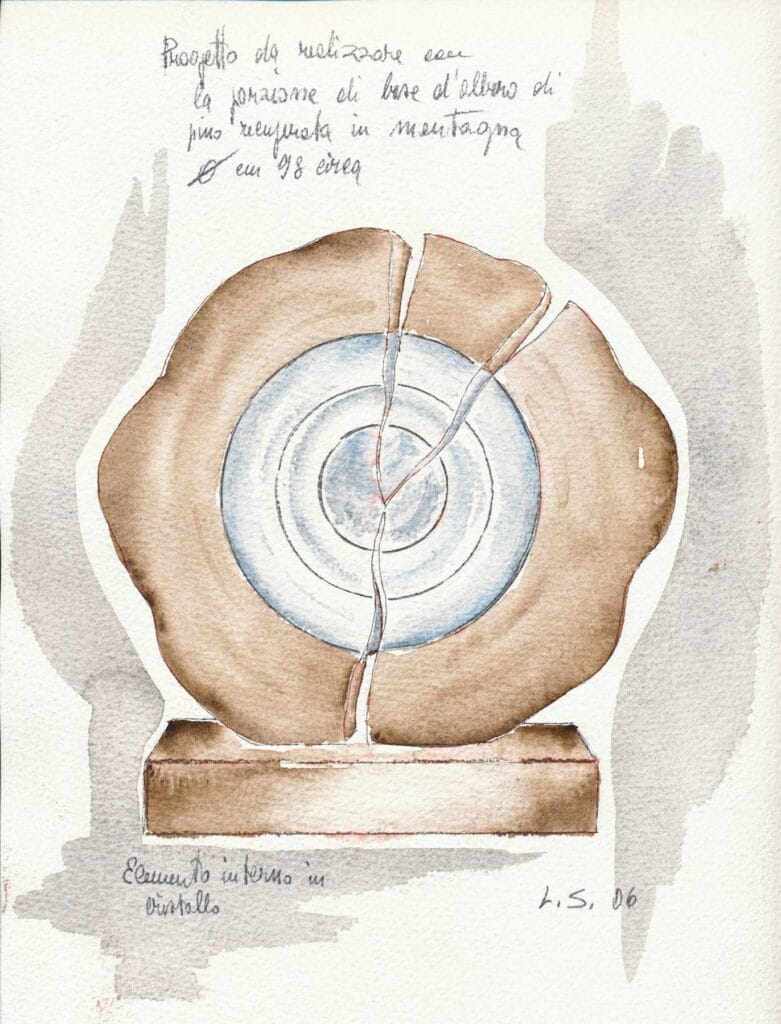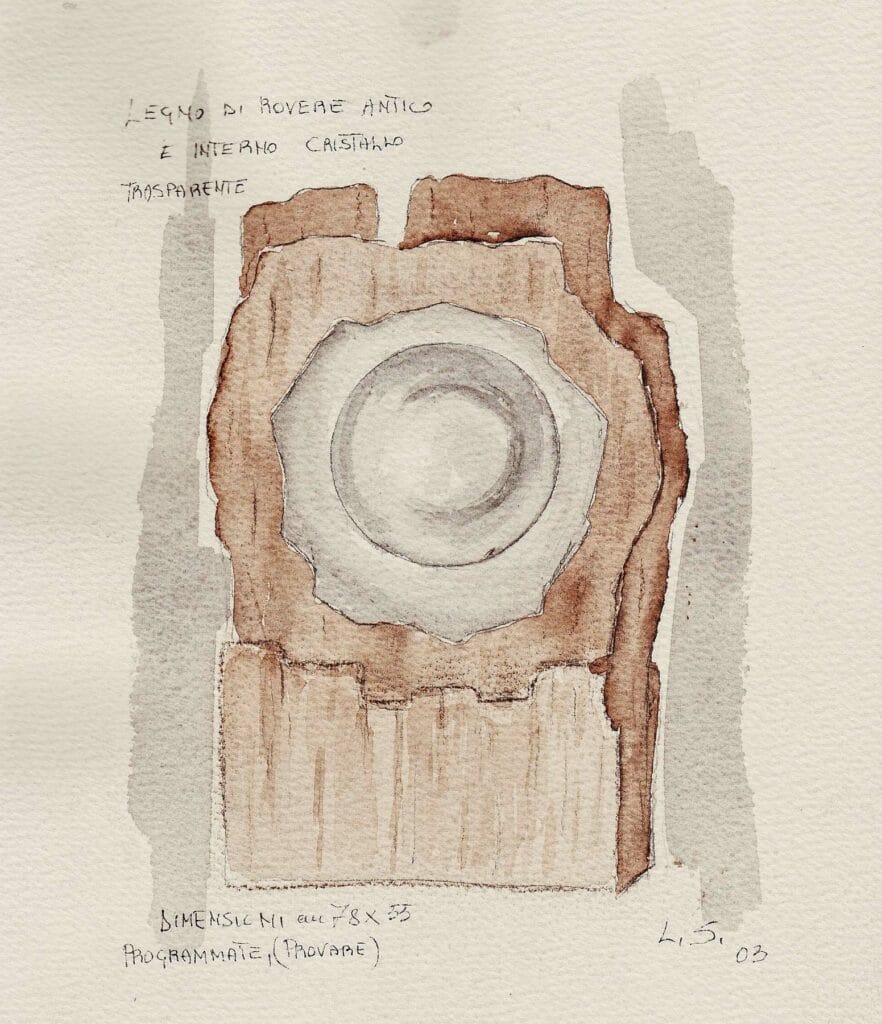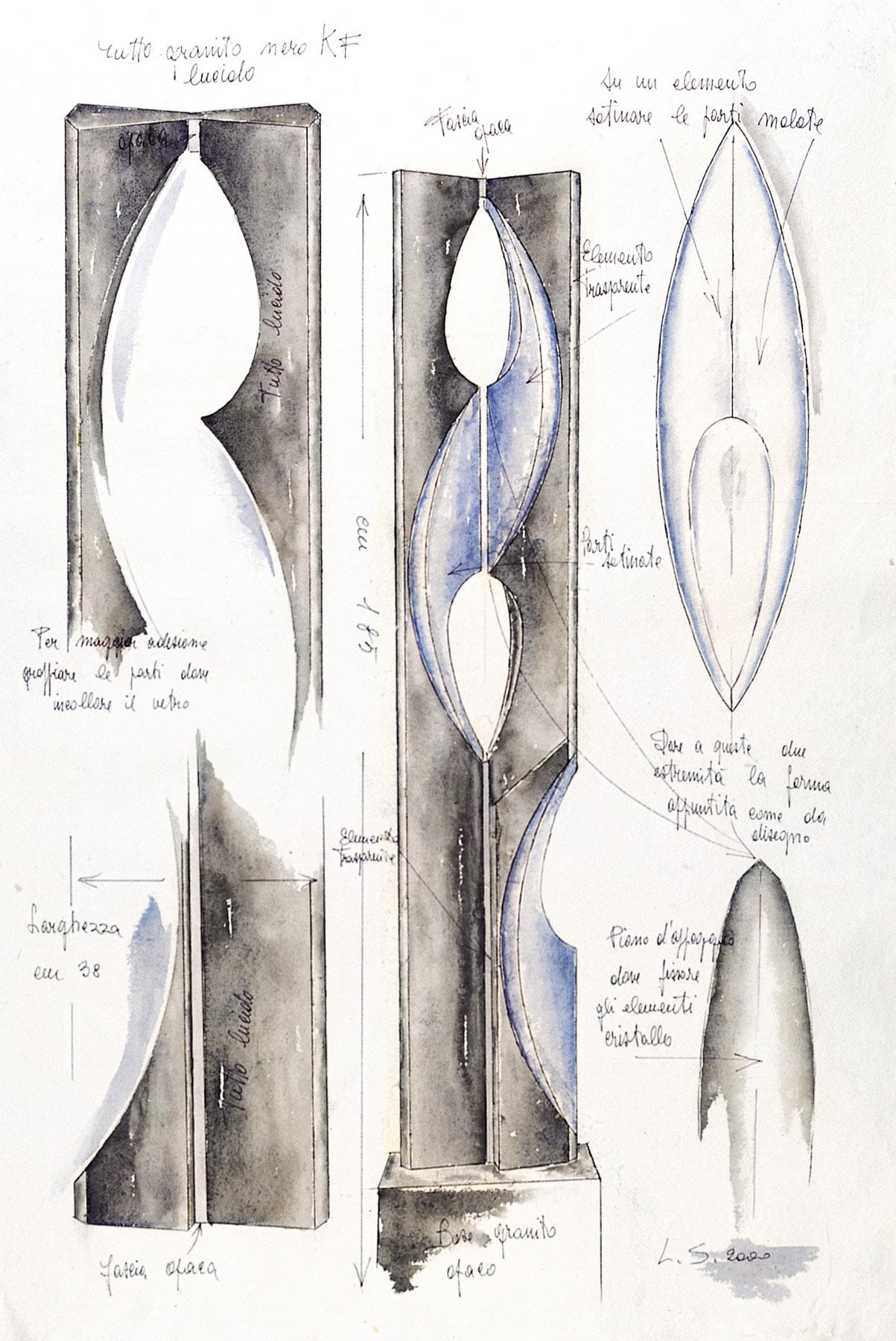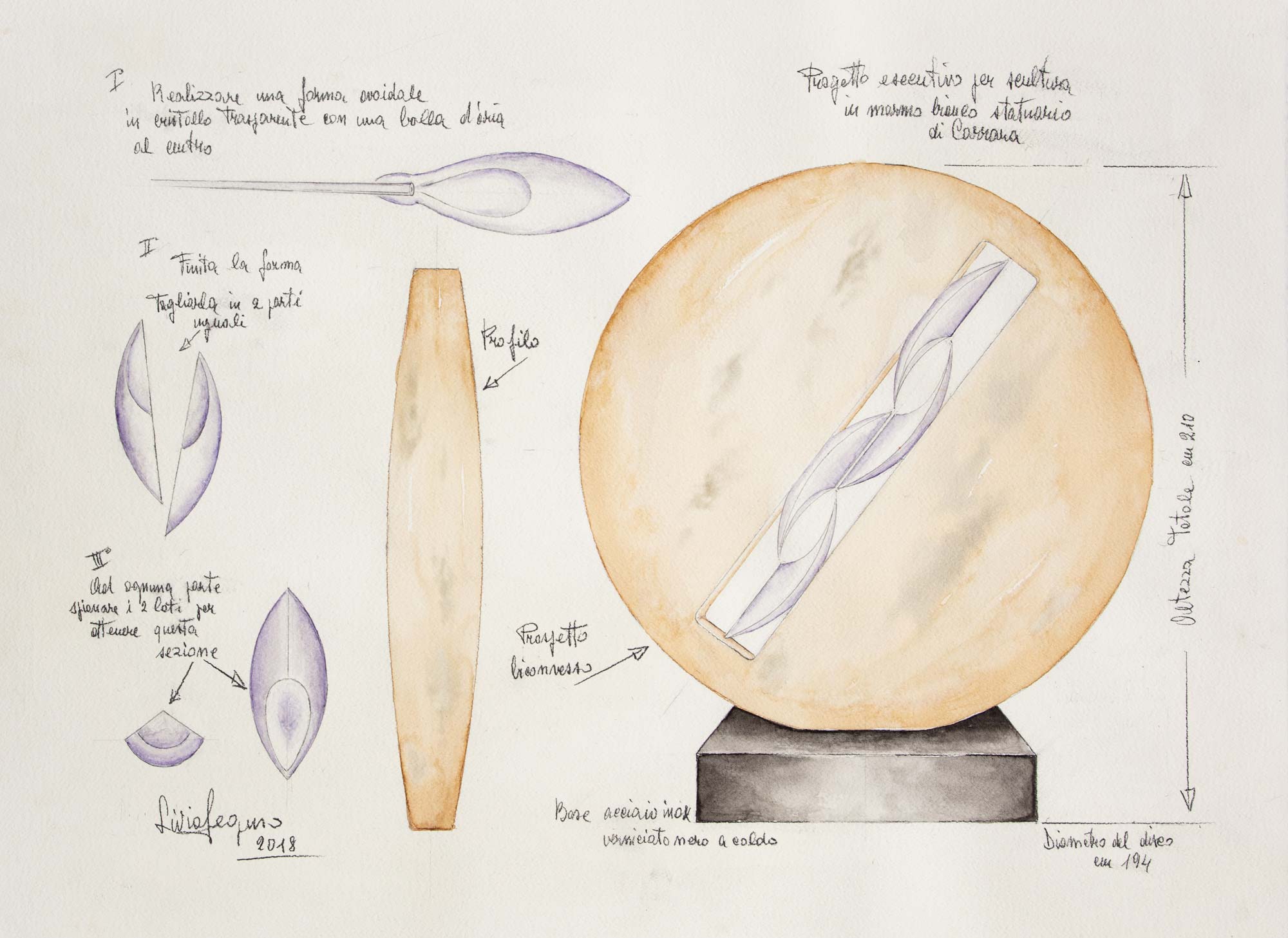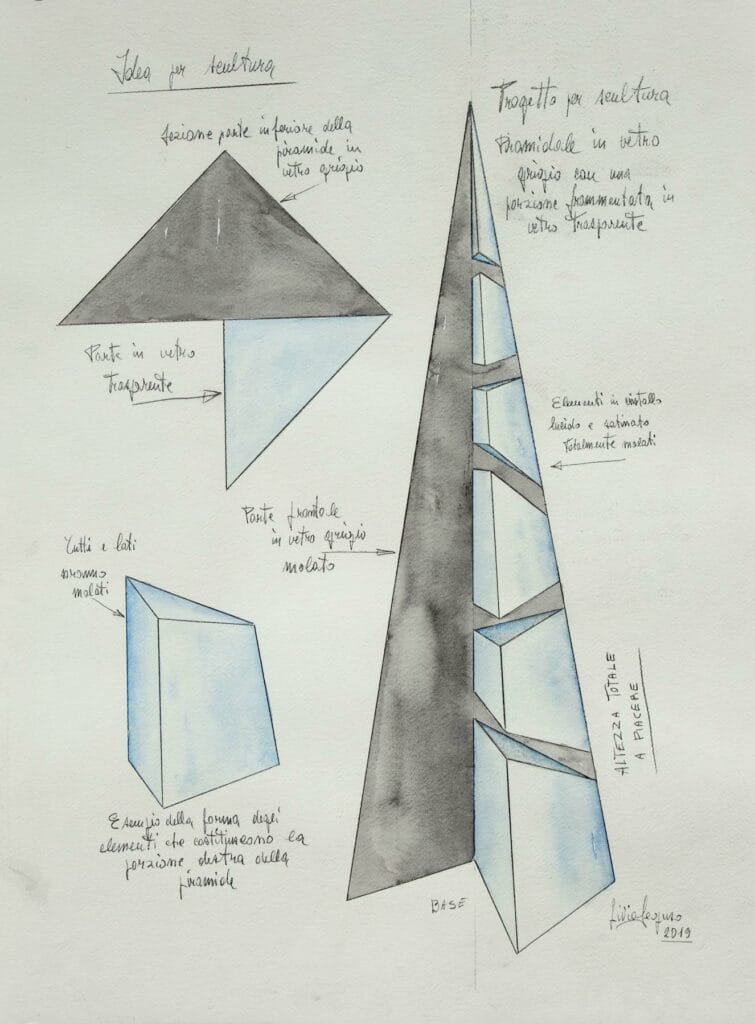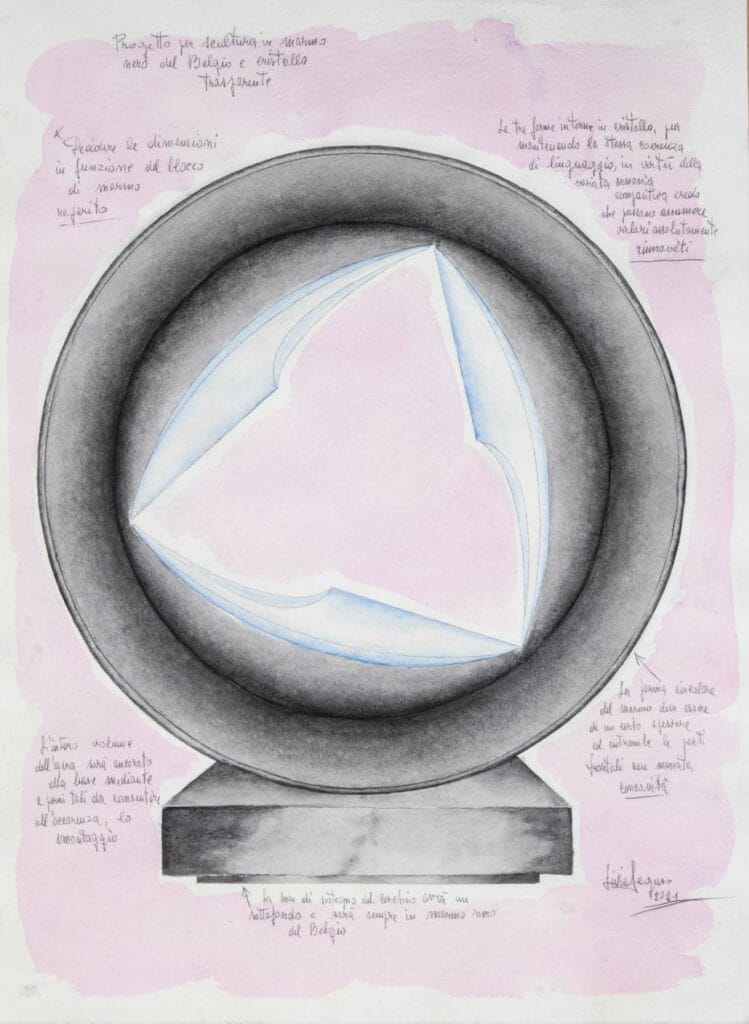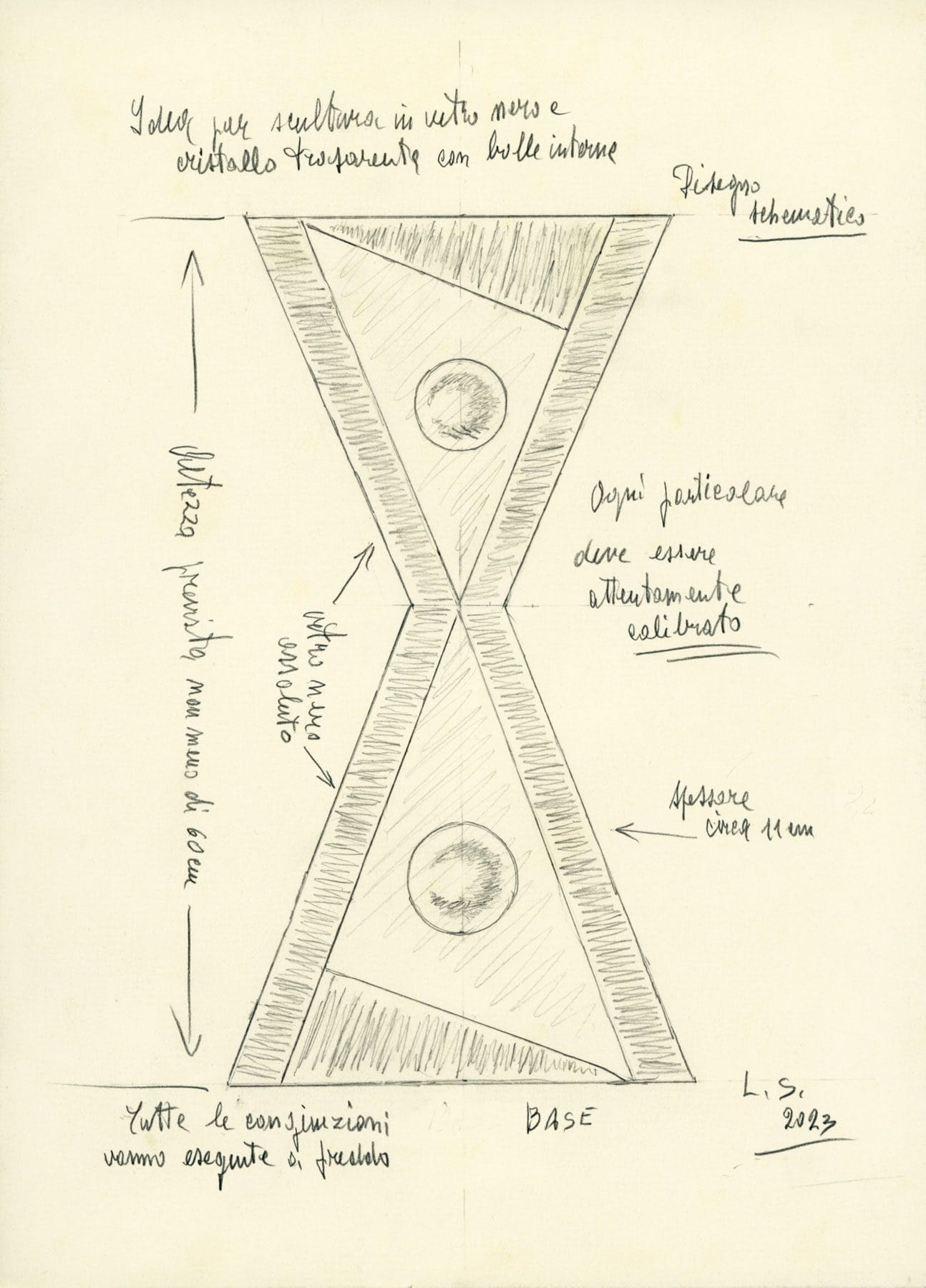Design drawings
At this point, it is necessary to reflect on the artist’s graphic activity that began as a child with the study of drawing under the guidance of the secessionist painter Vittorio Zecchin. When Livio Seguso felt his passion for glass, he realized how important this art was in defining the form he perceived in his imagination and determining the execution process. In the early days, he confined himself to basic sketches, perhaps hasty but essential to make clear the idea and the implementation purpose he would put in place to bring his plan to fruition, to make it easier for his collaborators to support operations. Later, the artist also treats his drawings with chalk, colored pastels, and watercolors techniques that make them very interesting and pleasing.
Studio per Vortice, 1978
Pencil on paper, 24×30 cm
Studio per Il Gioco 1, 1980
Pencil on paper, 59,5×42 cm
Studio per Il Gioco 5, 1980
Pencil on paper, 59,5×42 cm
Studio per Intuizione, 1986
Colored ink on paper, 55×37,5 cm
Disegno esecutivo per L’infinito, 1986
Pencil on paper, 38×25,5 cm
Progetto per L’0cchio di Dio, 1991
Watercolor on paper, 64,5×52,5 cm
Studio elaborativo per Feeling, 1991
Watercolor and ink on paper, 71×51 cm
Sviluppo formale per Concentrazione, 1991
Pencil and watercolor on paper, 21×17 cm
Studio per Cerchio di luce, 1998
Colored pencil on paper, 17,5×21 cm
Svolgimento per Struttura con sfera, 1992
Watercolor on paper, 54×50 cm
Progetto per Luce e natura, 2006
Watercolor on paper, 21×22 cm
Progetto per La luce nel tempo, 2003
Watercolor on paper, 29,6×21,5 cm
Studio per Equilibrio plastico, 2000
Watercolor and ink on paper, 104×64,5 cm
Progetto per Universalità, 2018
Pencil and watercolor on paper, 56,5×76,5 cm
Idea per scultura, 2019
Pencil and watercolor on paper, 77×56,5 cm
Progetto per scultura, 2021
Pencil and watercolor on paper, 76,5×56,5 cm
Idea per Divergenze Contrappunte, 2023
Pencil on paper, 29,3×21 cm
…in Livio Seguso’s artwork, the sign is the indispensable tool for recognizing the forms that stir his imagination and give them visual concreteness. The image then acquires an autonomous formal value and lives its own life. Through this process, Seguso asserts his creative freedom, bringing forth distinctive forms that were previously unknown, thus focusing on a personal formal and expressive signature, the only one that represents him, and becoming his most authentic spiritual self-portrait.
Enzo Di Martino, art critic, Venice
